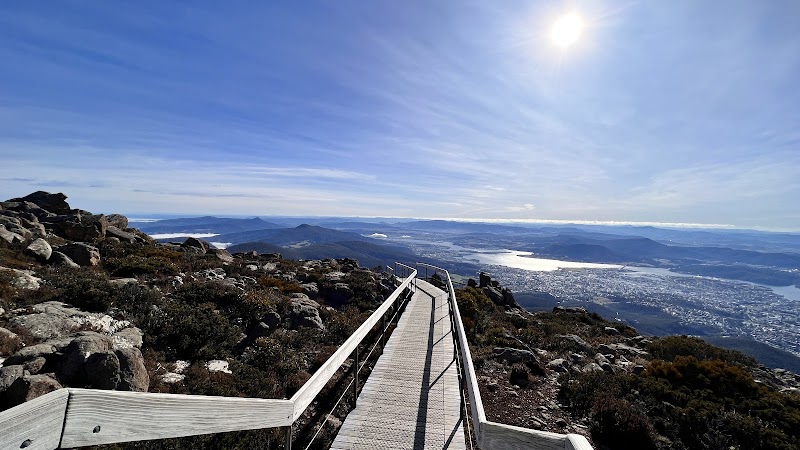Exploring Wildlife Wonders Near Hobart: A Practical Guide to Nature’s Front Door
Discover the vibrant wildlife just beyond Hobart’s boundaries, where endemic species thrive in forests, coastal cliffs, and waterways. This guide equips you with the knowledge to navigate and engage with Tasmania’s unique natural world, blending adventure with practical tips for every explorer.
Choose sturdy footwear
Trails near Hobart vary from soft forest floors to rocky coastal edges requiring good grip and ankle support.
Pack layered clothing
Weather can shift rapidly in Tasmania, so dress in layers to adjust to cool damp mornings and warmer afternoons efficiently.
Bring binoculars
Many wildlife species remain hidden or distant, making binoculars ideal for spotting elusive animals in treetops or on cliff sides.
Stay hydrated
Long hikes combined with variable weather make carrying water important, especially when exploring remote reserves or coastal walks.
Exploring Wildlife Wonders Near Hobart: A Practical Guide to Nature’s Front Door
Hobart offers an unrivaled gateway into the wild ecosystems of Tasmania, where native wildlife thrives amidst diverse landscapes. Just beyond the city limits, dense forests, rugged shorelines, and tranquil reserves invite adventurers to witness species found nowhere else on earth. From the curious quolls darting through understory shadows to the soaring seabirds cutting sharp patterns above Storm Bay, the area's wildlife challenges you to slow down and engage with a world fiercely itself.
Key keywords tailored for this epic nature encounter include: wildlife near Hobart, Tasmanian wildlife, Hobart nature tours, native animals Tasmania, and outdoor adventures Hobart. These keywords capture the high interest in experiences that blend curiosity with discovery while providing practical ways to explore.
Wildlife near Hobart often comes to life in places like Mount Field National Park, home to platypus in shaded streams or the bright flashes of satin bowerbirds weaving their displays. The Tasman Peninsula, within easy reach, offers encounters with endemic wallabies and the occasional Tasmanian devil in protected reserves. Coastal walks around the South Arm Peninsula reveal migrating whales during season, and seabird colonies that harness raw ocean energy.
When searching for wildlife near Hobart, think beyond just spotting animals—consider activities like guided hikes, boat tours, and dawn birdwatching sessions. These experiences turn passive viewing into active engagement with the environment’s rhythms and challenges. Prepare for moderately rugged terrain, often damp with forest moisture but punctuated with expansive views of sprawling wilderness and ocean vistas.
Hobart’s wildlife is not tame. It moves with intention, tests your patience, and rewards preparation. Equip yourself with reliable hiking boots, layered clothing for sudden weather changes, and binoculars turned to the treetops or distant cliffs. Timing matters—early mornings and late afternoons are generally best for animal activity.
Whether you’re a casual explorer or a dedicated naturalist, Hobart’s surroundings offer a practical yet thrilling adventure into the heart of Tasmanian wildlife.
Nearby Trips
All Adventures
Boat Charters
Water Activities
Adventures near Hobart
Discover the unique and memorable adventures that make Hobart special.
Frequently Asked Questions
What types of wildlife are most commonly seen near Hobart?
Visitors frequently encounter Bennetts wallabies, echidnas, and diverse bird species such as rosellas and honeyeaters. Platypus are spotted around freshwater streams, particularly in Mount Field National Park.
Are guided wildlife tours available around Hobart?
Yes, multiple operators offer guided walks, boat trips, and nocturnal tours focusing on local fauna. These provide deeper insight into animal behaviors and habitats while ensuring responsible interaction.
Is the terrain suitable for beginner hikers?
Many trails are moderate with some uneven surfaces and elevation changes. Beginners can enjoy shorter circuits around reserves like Mt. Wellington foothills, but should prepare for natural trail conditions.
When is the best time to see Tasmanian devils near Hobart?
Twilight and nighttime offer the best chances to observe devils in natural reserves cautiously managed to protect them, especially in cooler months when activity increases.
Are there environmental restrictions to be aware of?
Visitors should follow Leave No Trace principles, respect protected areas, and avoid disturbing nesting or feeding sites. Some reserves require permits or have seasonal closures.
Can I combine wildlife spotting with other outdoor activities?
Absolutely. Wildlife tours often pair with hiking, kayaking, or coastal cruises, providing a varied outdoor experience that touches on multiple elements of Hobart’s natural landscape.
Recommended Gear
Hiking boots
Provides ankle support and traction on uneven or slippery forest and coastal terrain.
Layered clothing
Allows adjustment to Tasmania’s rapidly changing weather conditions for comfort and safety.
Binoculars
Enhances wildlife viewing by bringing distant animals and birds into sharp focus.
Water bottle
Crucial for staying hydrated during long hikes or excursions away from facilities.
Local Insights
Hidden Gems
- "The Subantarctic Plant Garden at Mount Wellington features rare native flora and quiet wildlife viewing."
- "The lesser-known Knights Point Trail offers coastal rock pooling alongside seabird observation."
- "Try the Tasman Island overlooks for close views of migrating whales without the crowds."
Wildlife
- "Tasmanian pademelons often emerge at dusk along forest edges."
- "Glowworms light up caves in the southeastern forests, a specialty night sight."
- "Seals haul out on remote beaches near the Tasman Peninsula."
History
"The region holds strong Indigenous significance, with many sites indicating ancestral hunting and cultural practices tied directly to the land and its creatures."
